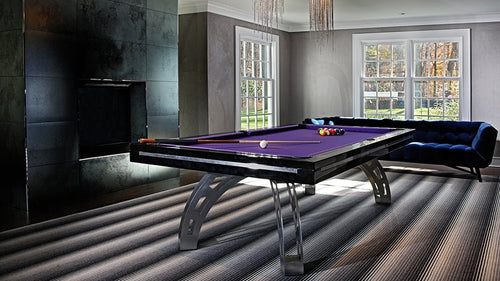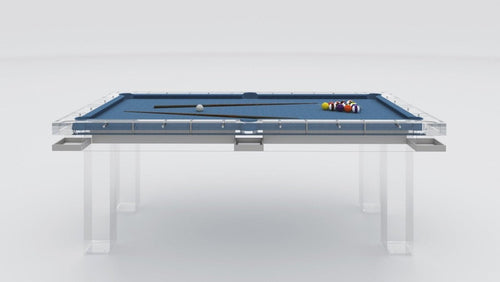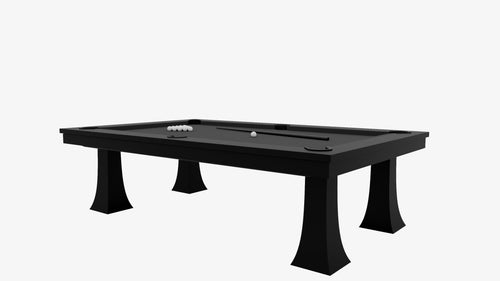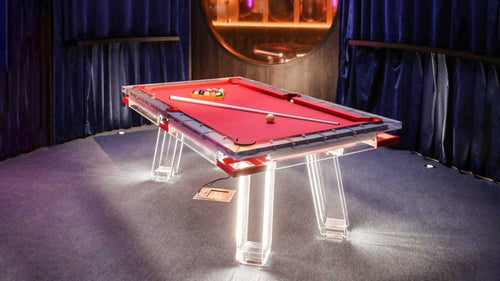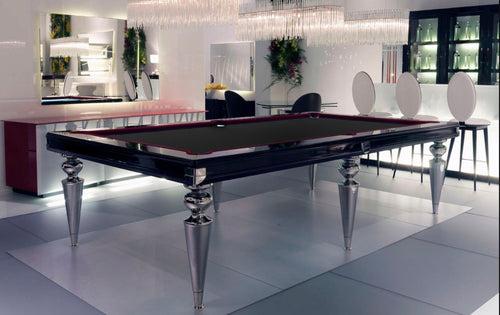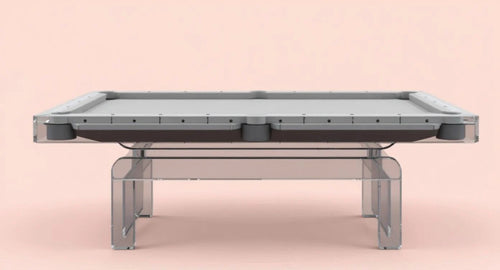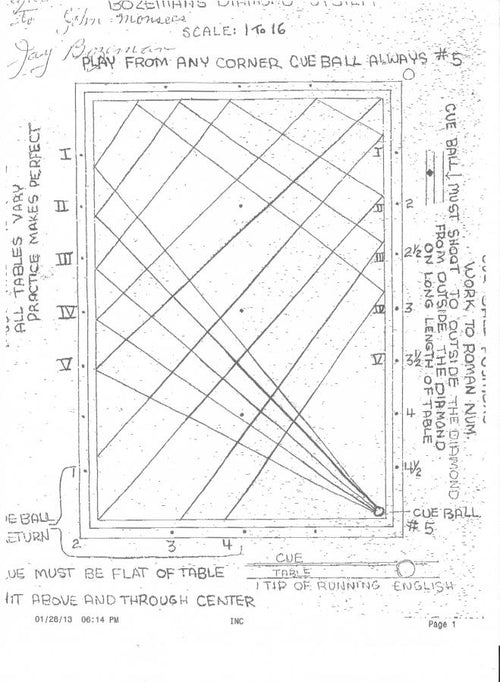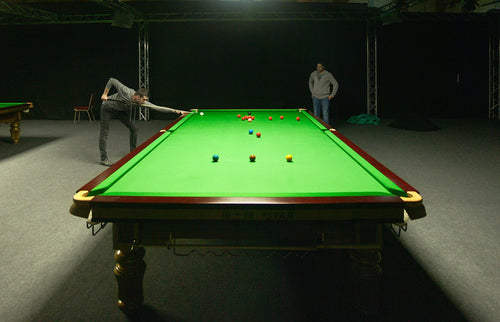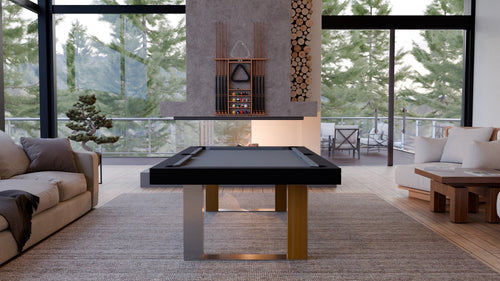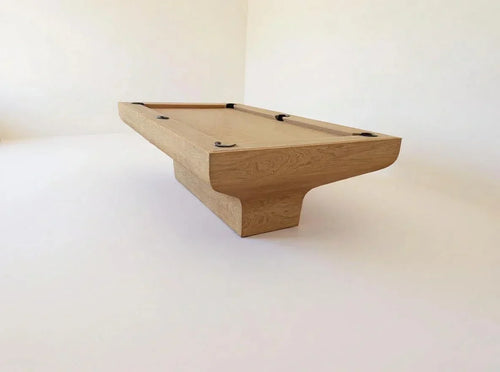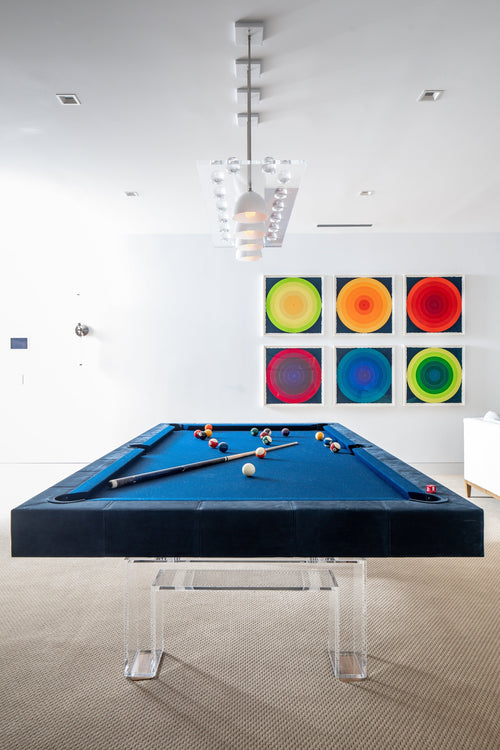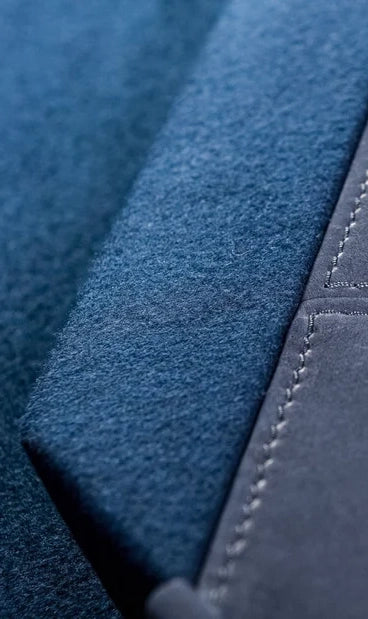Enjoy our modern designs
From Bauhaus steel and Streamline curves to post-war aluminum and today’s crystal and acrylic tables—the pool table followed modernism’s shift to function, clarity, and honest materials.
Modernism in one minute
Modernism stripped furniture to purpose: clean geometry, minimal ornament, and industry-ready materials. Bauhaus designers pushed tubular steel and mass-production logic—lightweight frames, exposed structure, and “form follows function.”
Streamline Moderne hits billiards (late 1930s–40s)
By the late 1930s, American makers echoed Streamline Moderne’s rounded corners, horizontal banding, and chrome/aluminum accents—the ocean-liner look.
Brunswick models prove the shift. Catalogs from the period show contoured aprons and tear-drop legs on the Moderne, and sleeker “20th Century” tables positioned as modern, affordable regulation builds.
Post-war aluminum & mid-century detailing (1945–50s)
After WWII, aluminum moved from aircraft to interiors. Brunswick’s Anniversary (c. 1945–46) and Centennial (from 1946) used cast/extruded aluminum for corners, aprons, and trim—classic modernist “machine” detailing applied to a tournament table.
Period notes describe the Anniversary as walnut with off-white aluminum castings; the Centennial as rosewood-accented with mar-resistant aluminum aprons—Streamline curves, honest materials, minimal ornament.
Materials playbook: steel, laminates, glass, acrylic
Steel & chromed hardware
Tubular-steel thinking—precision bends, thin profiles—set the language for chromed details across mid-century furniture and fixtures, influencing how tables expressed structure and edge protection.
Laminates (Formica) in the post-war interior
Formica surged in the 1940s–50s for durable, wipe-clean, “streamlined” surfaces across cafés and public interiors, a finish logic that bled into game-room cabinetry and accessories.
Glass transparency
Contemporary Italian designs pushed “honest materials” to an extreme: tempered-glass legs and even crystal playfields. A 9-ft crystal-glass model typically uses ~15 mm low-iron tempered glass for legs and playfield, weighs on the order of 400 kg, and pairs it with solid aluminum rails.
Acrylic/Lucite clarity
Mid-century acrylic furniture rose in the ’60s–’70s (think Charles Hollis Jones), normalizing optically light forms that now inform clear-frame or Lucite-accented game tables.
Minimalism + multifunction today
Modernism also pushed utility. Belgium’s dining-to-billiard concepts made the idea literal: a steel frame, slim deck profile, and lift mechanisms that raise from standard dining height (~75 cm) to regulation play height (~82.5 cm), seating up to roughly ten when covered.
On the luxury end, brands iterate clean planes, metal frames, and convertible tops—less ornament, more architecture. Examples include steel/aluminum frames with dining tops, and crystal-leg tables with aluminum rails.
Explore more modern tablesDesign takeaways
- Function first: clearer sightlines, thinner edges, serviceable parts.
- Streamlined massing: rounded corners, horizontal bands, metal trims.
- Industrial materials: aluminum trim/castings post-1945; later laminates, then glass and acrylic—materials become the aesthetic.
- Multifunction: dining-to-billiards converts are modernist utility made literal.
Sources
Bauhaus/modernism primers (Breuer’s tubular steel), Streamline Moderne overviews, Brunswick mid-century catalogs (Moderne, 20th Century, Anniversary, Centennial), Formica post-war interiors, and contemporary crystal/acrylic table specifications.



